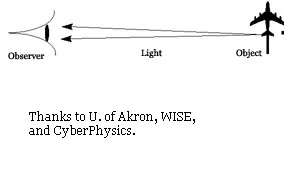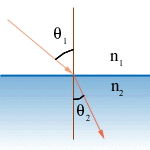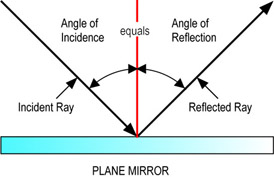


Electromagnetics
Before Maxwell 


Comprehensive theories that could explain reflection, refraction and rectilinear propogation of light did not show up on the scientific scene until around the 17th century. Rectilinear propogation means that light travels in a straight path from its origin point (1). Refraction is the property which exibits itself when light travels from one substance to another. (2) The light changes direction; the change is dependant on its' incoming angle and the substances it passes through the boundary of. Reflection is the property whereby light "bounces" off an object it hits, returning at an angle dependant, again, on its' initial angle. (3)



These properties could each be explained by two theories, the particle (or "corpuscular") theory of Isaac Newton and the wave theory, proposed by others including Christiaan Huygens and Robert Hooke. To explain refraction, Newton's theory stated that light was attracted to the particles of matter in more optically dense bodies, and so the speed of light would be greater in such substances. This was proven to be incorrect in 1850 when Foucault showed that the speed of light in water was slower than that in air. Thus the wave theory of light was accepted, and the stage was set for another great discovery, by James Clerk Maxwell.
Thanks to the State of Louisiana.